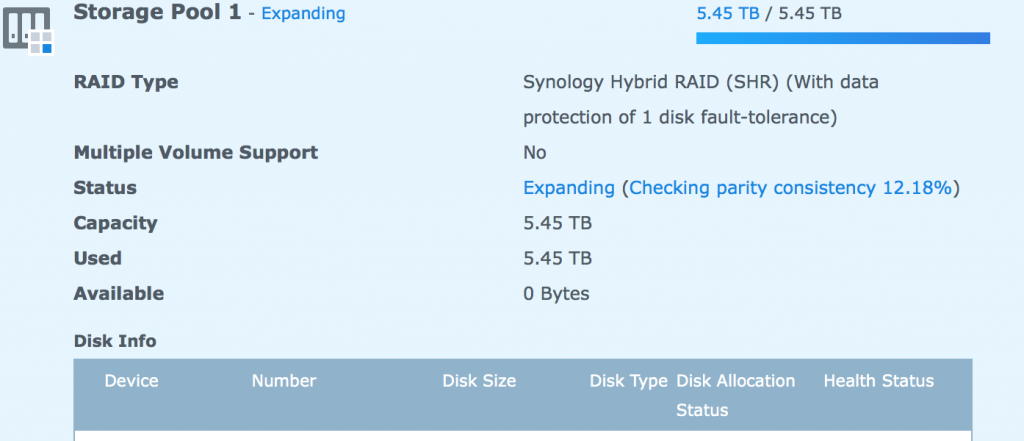

For example, if you have ten 15K RPM disks, each with 175 IOPS capability, your disk system has 1,750 IOPS worth of performance capacity. Fortunately, it’s easy to translate raw IOPS values from single disk to multiple disk implementations it’s a simple multiplication operation.
#Synology drive space calculator install
Multidisk arraysĮnterprises don’t install a single disk at a time, so the above calculations are pretty meaningless unless they can be translated to multidisk sets. If a vendor decided to release a 15K RPM SATA disk with low latency and seek time values, it would have a high IOPS value, too. Sure, SAS disks will perform better than most SATA disks, but that’s only because SAS disks are generally used for enterprise applications due to their often higher reliability as proven through their mean time between failure (MTBF) values. Note: The drive type doesn’t enter into the equation at all. As you can see, the values for each kind of drive don’t radically change from source to source. For ease of calculation, use these values unless you think your own disks will vary greatly for some reason.īelow I list some of the values I’ve seen and used in my own environment for rough planning purposes. However, rather than working through a formula for your individual disks, there are a number of resources available that outline average observed IOPS values for a variety of different kinds of disks. Compare this to the chart below, and you’ll see that the value of 133 falls within the observed real-world performance exhibited by 10K RPM drives. So, this sample drive can support about 133 IOPS.

Disk performance - and IOPS - is based on three key factors: The information presented here is intended to be very general and focuses primarily on random workloads.Įvery disk in your storage system has a maximum theoretical IOPS value that is based on a formula.In general, there are three performance categories related to IOPS: random performance, sequential performance, and a combination of the two, which is measured when you assess random and sequential performance at the same time. IOPS calculations vary wildly based on the kind of workload being handled.Vendors often measure IOPS under only the best conditions, so it’s up to you to verify the information and make sure the solution meets the needs of your environment. Published IOPS calculations aren’t the end-all be-all of storage characteristics.Here are three notes to keep in mind when reading the article: I do not go into seriously convoluted mathematical formulas, but I do provide you with practical guidance and some formulas that might help you in your planning. Specifically, I explain how individual storage components affect overall IOPS capability. In this article, I provide introductory information that goes into calculations that will help you figure out what your system can do. There are a number of factors that go into calculating the IOPS capability of an individual storage system. When it comes to measuring a storage system’s overall performance, Input/Output Operations Per Second (IOPS) is still the most common metric in use. What drives storage performance? Is it the iSCSI/Fiber Channel choice? The answer might surprise you.


 0 kommentar(er)
0 kommentar(er)
